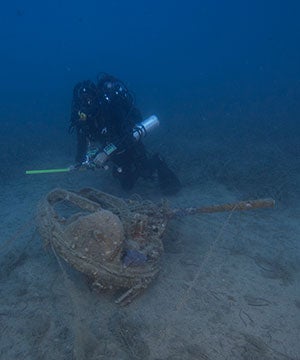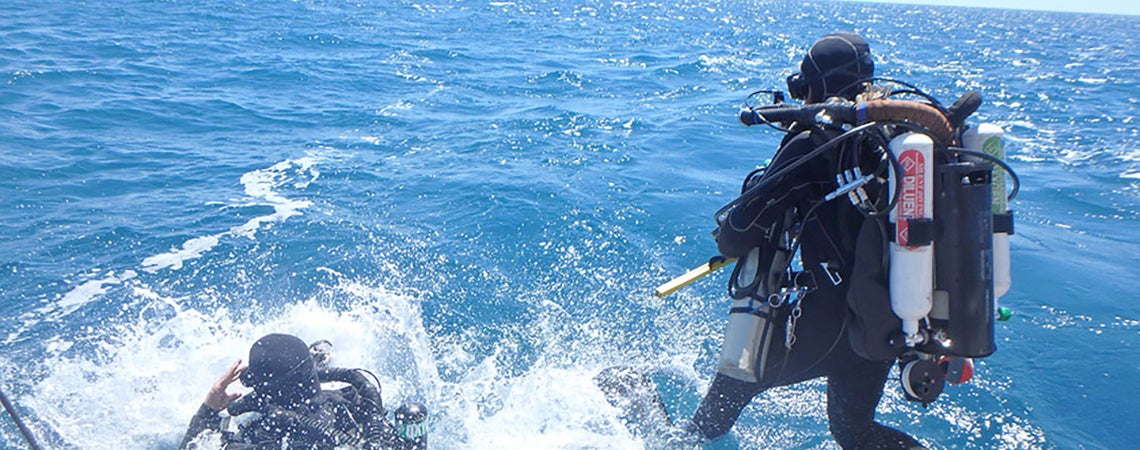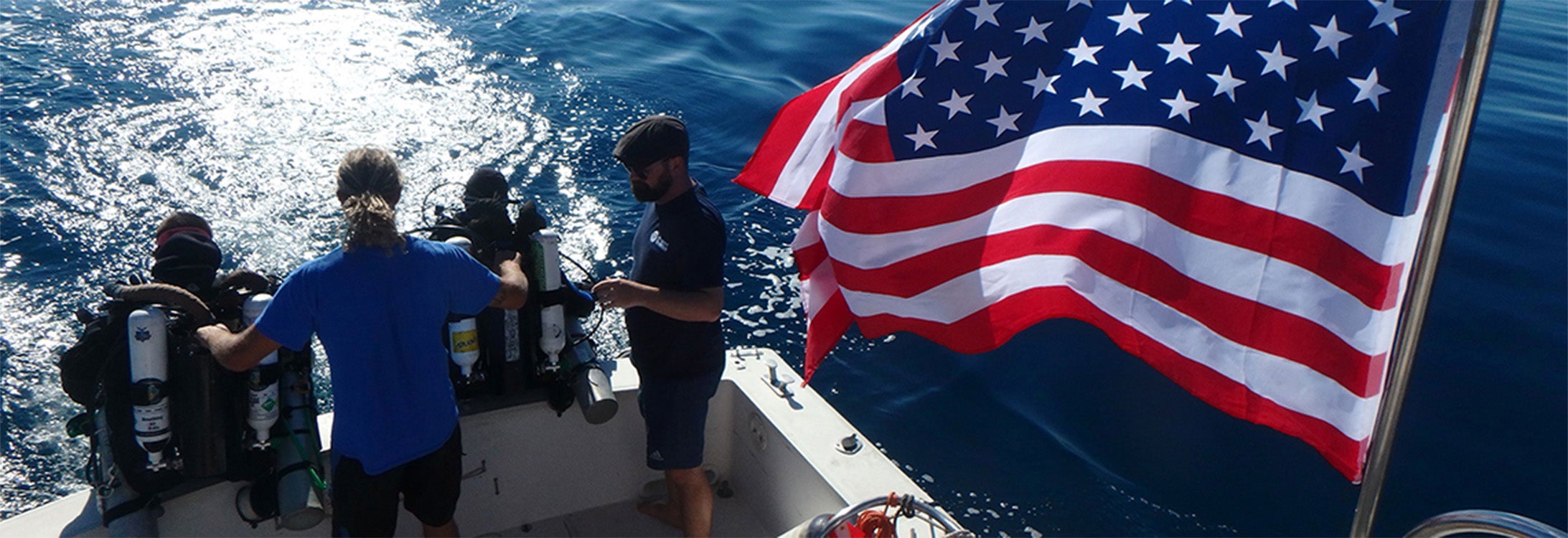UNDERSEA MISSION
Researchers perform archaeological investigation of downed WWII aircraft
Researchers in East Carolina University’s Program in Maritime Studies are working with the Department of Defense on a project they hope will give some peace of mind to U.S. military families who lost loved ones during World War II.
Dr. Jennifer McKinnon, associate professor of maritime studies, and Dr. Jason Raupp, program archaeologist, recently led a team to perform an underwater archaeological investigation of a U.S. Army Air Forces B-24H Liberator Heavy Bomber. The bomber, with its crew of 10, was shot down North of Rome, Italy in 1944.
The investigation is funded by a Defense POW/MIA Accounting Agency (DPAA) contract whose mission is to search for, recover and identify potential remains from missing personnel during past conflicts.

ECU dive safety officer Mark Keusenkothen dives near a turret.
“The cause of recovering lost service members is something that you can’t even put a value on, and to me it’s a humbling experience to be involved in something like this,” said McKinnon. “As a maritime archaeologist studying shipwrecks, often you wonder how practical, meaningful or how impactful your research is, and I can’t imagine a more impactful project than giving families peace of mind knowing where their family members were lost.”
Raupp said this mission shows that people are still interested and concerned for the military and their families.
“I feel incredibly honored. It’s such a meaningful and important mission, and it is fortunate that ECU has been chosen as a partner,” said Raupp. “As archaeologists, it is not often that you are involved in research that has the ability to give closure to families.”
In addition to McKinnon and Raupp, the team includes Mark Keusenkothen and Jason Nunn, two ECU dive safety officers; Annie Wright, ECU maritime studies graduate student; Matt Hanks, an archaeologist with the National Park Service; Joe Hoyt, an ECU maritime studies alumnus working with NOAA; and an Italian colleague, Dr. Massimiliano Secci.
“Participating in this DPAA project was an incredibly rewarding experience,” said Wright. “This allowed us to use our skills as archaeologists (and archaeology students) to assist in their mission. Talk about archaeology with a cause!”
During the survey of the area, the team used acoustic imagery technology and photogrammetric survey to record the scattered wreckage and create a 3D model of the site. The combination of high definition photogrammetric models, acoustic imagery and related virtual documentation minimizes the time spent manually recording sites, and the resulting dataset provides critical planning information, which assists decisions for future recovery efforts.
“This type of detailed digital site documentation elevates the quality of information so that DPAA may achieve the best possible accounting and messaging to MIA families, host country officials, other federal agencies and the public,” said McKinnon.
In speaking about the local community, Raupp and McKinnon stated that they were very open, inclusive, warm and hospitable. They praised the assistance provided by the local officials.
Within the month, the ECU team will submit a written report to the DPAA. This report will help determine the subsequent actions for this particular site.

Divers jump in the water to explore the wreck.
